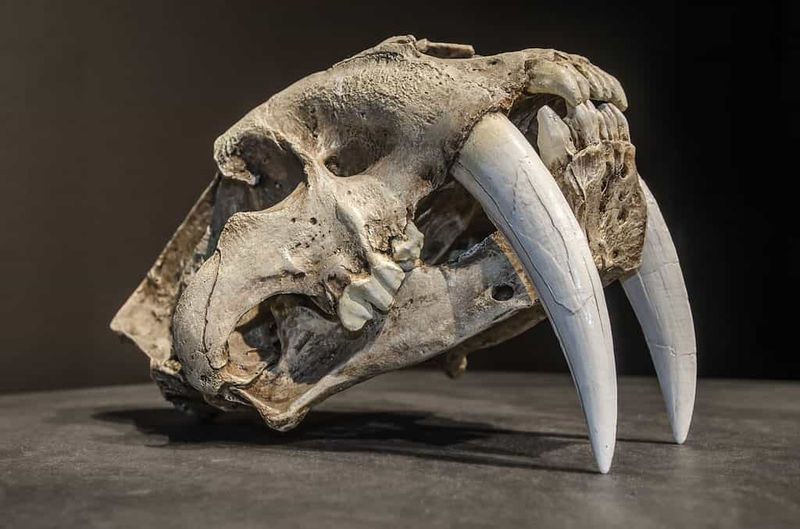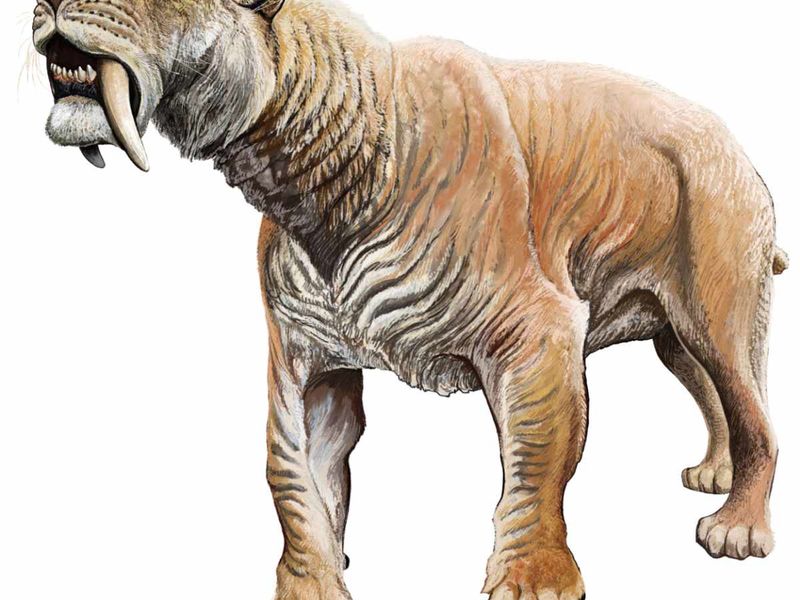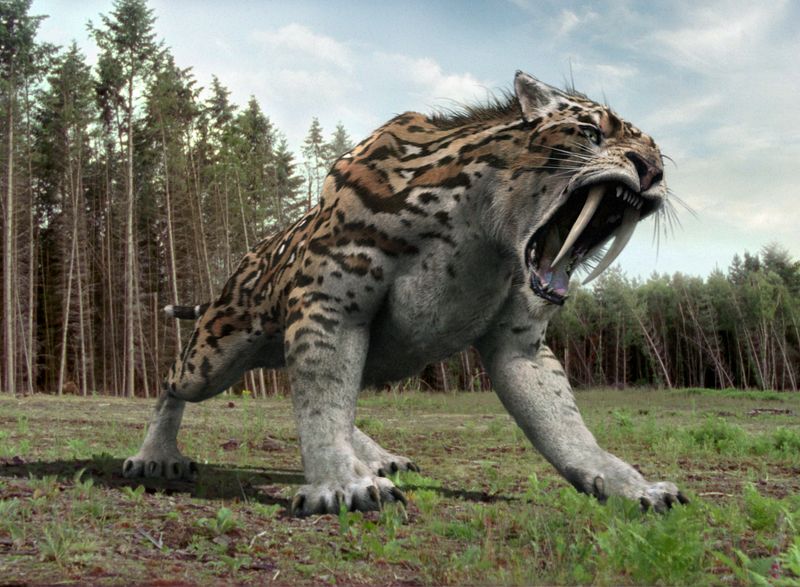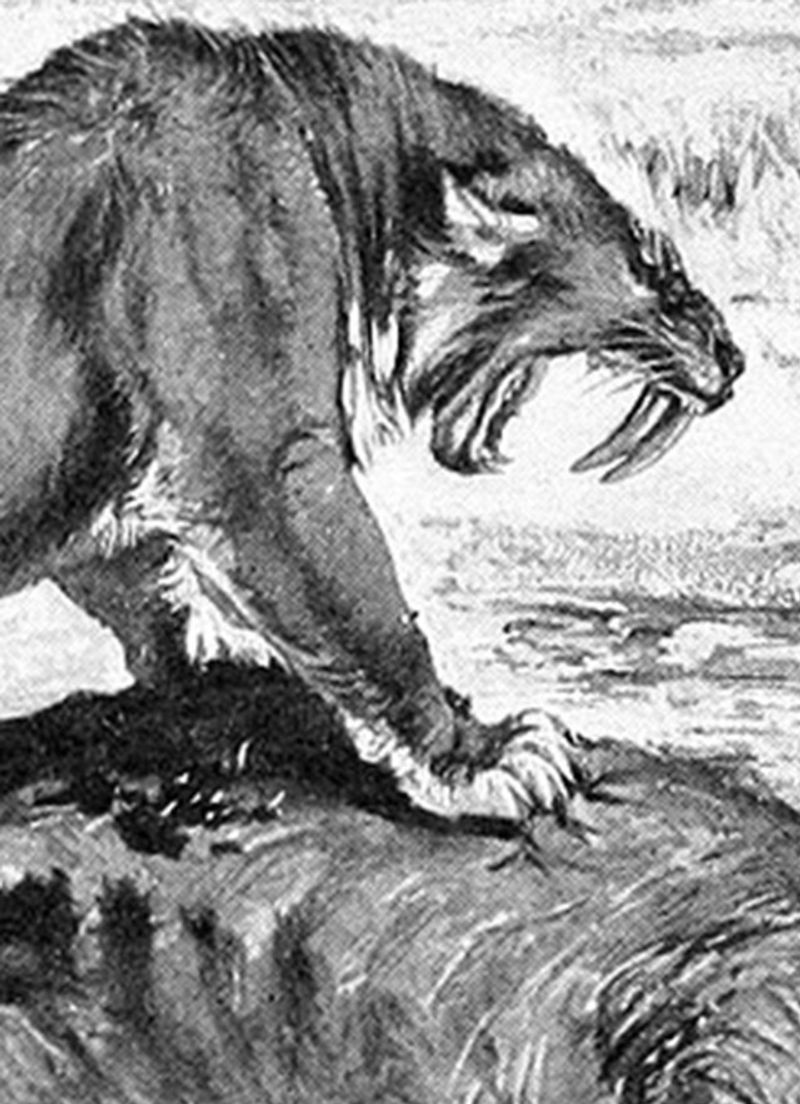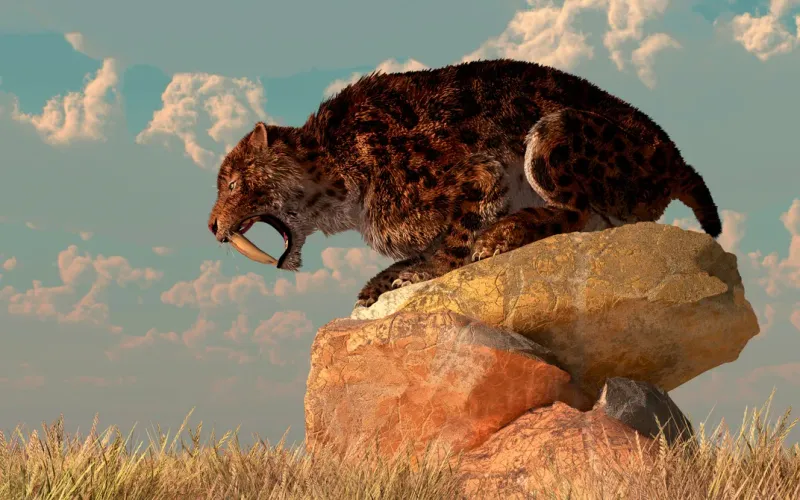📖 Table of Content:
The saber-toothed tiger, known scientifically as Smilodon, holds the crown as the apex predator of the Ice Age. Dominating the ecosystems of North and South America during the Pleistocene epoch, this formidable creature boasted specialized adaptations and hunting strategies that placed it at the pinnacle of the food chain. Its powerful build, elongated canines, and strategic hunting techniques enabled it to reign supreme. However, the end of the Pleistocene brought challenges that ultimately led to its extinction. We delve into the unique characteristics that made the saber-toothed tiger the fearsome predator it was.
1. Elongated Canine Teeth
Did you know that the saber-toothed tiger’s teeth could grow up to 30 centimeters long? These fearsome canines were not just for show. Unlike any feline today, Smilodon’s teeth were perfect for delivering swift, deadly bites. With every encounter, these teeth pierced the vital areas of their prey, ensuring a quick kill. Such adaptations were critical for survival in the competitive Ice Age ecosystem. Imagine the sight of those massive teeth glistening as the predator closed in on its target. These canines were the ultimate tool for dominance over large prey.
2. Powerful Forelimbs
With limbs that could rival those of a bodybuilder, the saber-toothed tiger had the power to match its fierce reputation. These muscular forelimbs were essential in grappling with and holding down large prey. Unlike the sprinters of today, Smilodon relied on sheer strength rather than speed. Picture this: in the middle of a hunt, its powerful limbs wrapped around its prey, rendering them helpless. These limbs were not just tools of brute force but an integral part of its hunting strategy, tailored for close combat battles in the dense forests of the Ice Age.
3. Robust Build
Imagine a creature built like a tank, ready to ambush its prey at a moment’s notice. The saber-toothed tiger’s robust physique told tales of its predation style. Unlike the fleet-footed cheetah, this predator’s muscular frame was designed for power. Its stocky build allowed it to overpower large animals swiftly. As sunlight dappled the dense forest floor, the Smilodon lay in wait, its muscles coiled like springs. This formidable build was a testament to its role as an ambush predator, biding its time before launching a powerful strike.
4. Group Hunting Dynamics
Teamwork makes the dream work, even for the saber-toothed tiger. This predator didn’t always hunt solo; evidence suggests that it may have engaged in group hunting, similar to modern lions. This strategy allowed them to tackle larger prey, ensuring survival during scarce times. Picture them coordinating silently, each member playing a role in the hunt. Through cooperation, they could take down even the most formidable herbivores. The Smilodon’s social dynamics demonstrate the complexity of its survival tactics, proving that even the fiercest predators benefit from collaboration.
5. Adaptation to Climate Change
Adapt or perish—a truth the saber-toothed tiger faced as the climate shifted. As the Ice Age ended, warming temperatures transformed their habitats, challenging their survival. These predators had to navigate shrinking grasslands and changing prey distributions. Visualize the mighty Smilodon adapting to this new world, maneuvering through altered landscapes. Despite their prowess, these changes were insurmountable. Their story is a poignant reminder of nature’s challenges and the relentless passage of time, where even the mightiest must evolve or fade into history.

